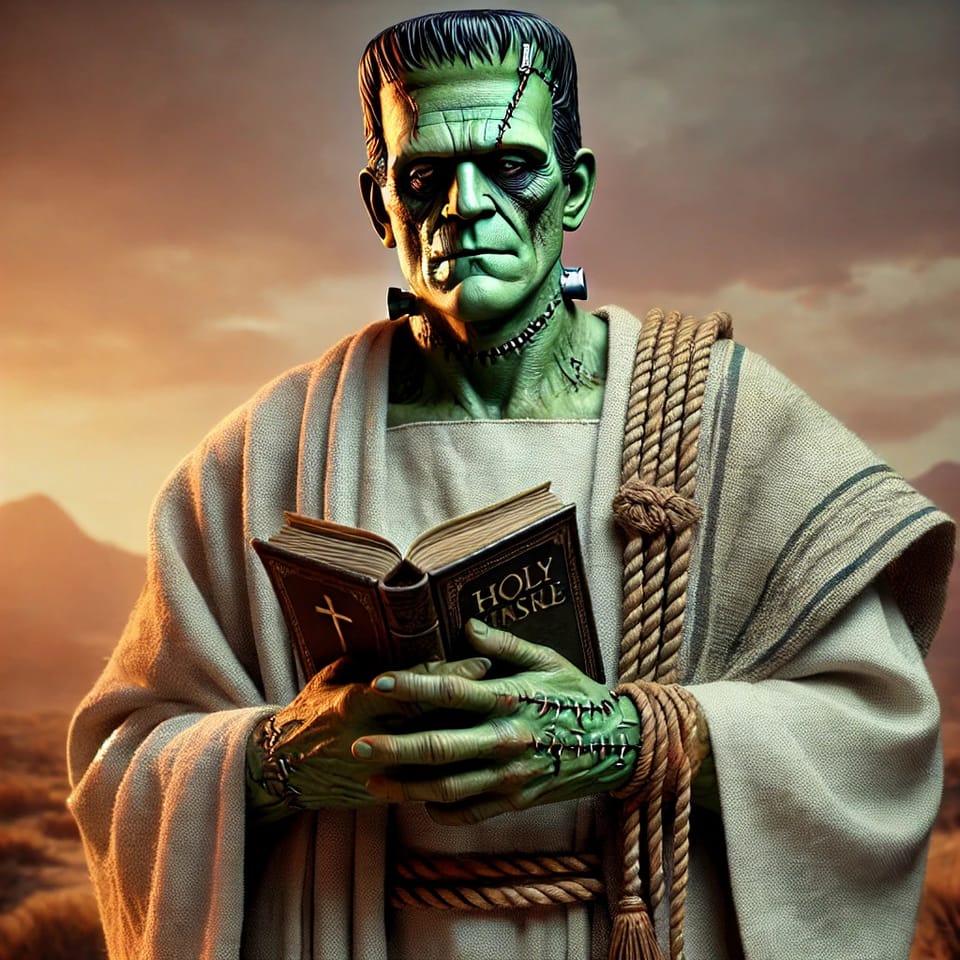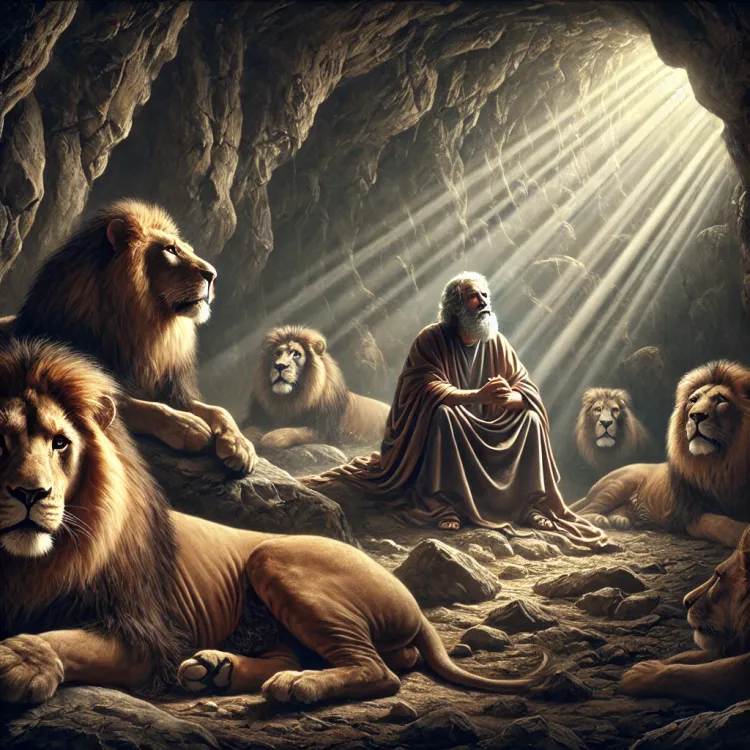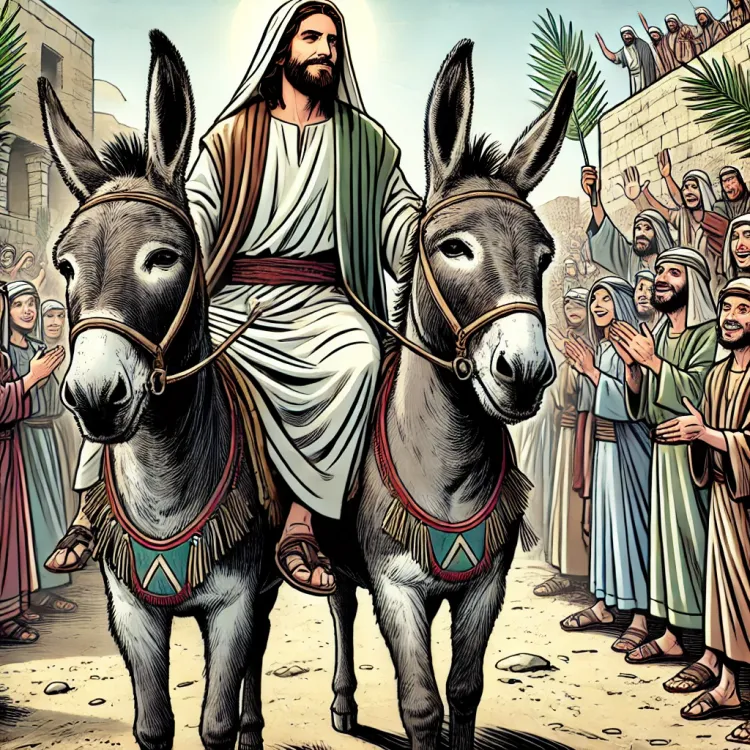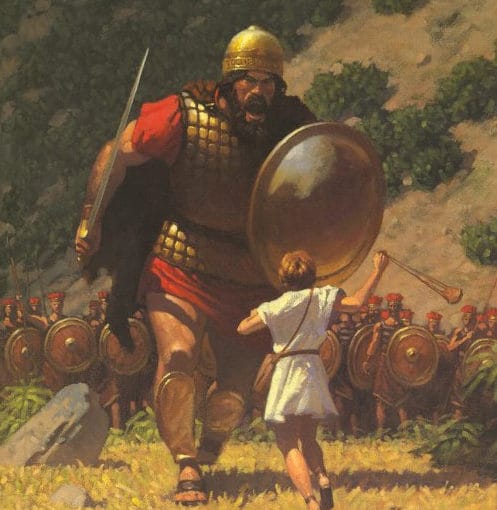The Frankenstein Torah: How the First Five Books of the Bible Were Actually Written

Ask your average believer where the Torah came from, and you’ll probably get a confident reply: Moses wrote it. You know—he went up Mount Sinai, got the commandments, then just kept going, scribbling down genealogies, battle reports, civil law, moral codes, poetic blessings, and finally his own obituary. Humble to the end.
The problem, of course, is that the Torah didn’t descend from the heavens in one divine Dropbox folder. It’s not a single voice, a single moment, or a single message. It’s a sprawling literary Frankenstein, stitched together over centuries from different sources, theological agendas, and geographical regions. It has contradictions, redundancies, and narrative whiplash not because Moses forgot what he wrote two chapters ago, but because multiple authors were writing different versions of the same stories—and later editors just glued them together and called it scripture.
The Documentary Hypothesis: A Theory with Cut Marks
The best-known theory for explaining this chaos is the Documentary Hypothesis, developed in its modern form by Julius Wellhausen. It proposes that the Torah is a compilation of at least four major sources—J (Yahwist), E (Elohist), D (Deuteronomist), and P (Priestly)—each with distinct vocabulary, theological concerns, and regional flavor (Friedman 73–105). These sources were written at different times, often centuries apart, and later redacted into a single work that tried (with limited success) to maintain internal coherence.
To be clear, the Documentary Hypothesis is not the only model. Some scholars prefer supplementary or fragmentary approaches. But nearly all agree on the central point: the Torah was not written by a single author. It is, at minimum, a literary collage, a text with multiple hands and conflicting viewpoints layered together like geological strata (Carr 31–34; Van Seters 44–58).
Doublets: When the Bible Tells the Same Story Twice (or Three Times)
One of the smoking guns in this theory is the presence of doublets—repeated stories that differ in detail, tone, and theology. These aren’t accidental echoes; they’re full-blown alternate versions of the same event, preserved side by side because the editors didn’t want to erase either tradition.
Take the waters of Meribah story. In Exodus 17, the people are dying of thirst, Moses strikes a rock, and water gushes out. All’s well. But in Numbers 20, the event happens again—with some differences. This time, God tells Moses to speak to the rock, but he strikes it instead, and for this disobedience, he's barred from entering the Promised Land. Same location name, similar setup, different theology—and vastly different consequences. It’s likely that these are two different traditions, both deemed too important to delete, so the redactor just kept them both.
Or take the wife-sister narratives: Abraham claims that Sarah is his sister to avoid being killed by foreign rulers—twice, once with Pharaoh (Genesis 12) and again with Abimelech (Genesis 20). Then Isaac pulls the same stunt in Genesis 26. These aren’t just thematic parallels. They’re near-identical stories with conflicting details, likely drawn from separate oral traditions, each edited into the final text with a shrug and a pen.

If One Author Wrote the Torah, It Wouldn’t Look Like This
A single author—even a divinely inspired one—probably wouldn’t write five books with nonlinear structure, internal contradictions, and endless repetition. Take the Ten Commandments: they appear in Exodus 20 and again in Deuteronomy 5, but the wording and justification differ. Why repeat the same event unless you're pulling from different source documents?
Or consider the structure of the Torah itself. It’s not five sequential books moving cleanly from point A to point B. It’s a spiral staircase—doubling back, retelling stories, and reinterpreting laws from different angles. Exodus, Numbers, and Deuteronomy all describe the Israelites wandering in the wilderness, sometimes telling the same events with different outcomes or motivations. This is not the product of a meticulous narrative planner. It’s the result of editors trying to respect competing traditions without choosing a winner.
Meet the Authors (or at Least the Camps)
Let’s revisit the four major contributors, each of whom thought they were telling the definitive story—until their narratives got mashed together.
- J (Yahwist) – ~950 BCE, likely in Judah. God is personal, earthy, and shows up in gardens and tents. Think folklore with a theological bent.
- E (Elohist) – ~850 BCE, from Israel. More abstract, prefers dreams and angelic intermediaries. Frequently nervous about monarchy and centralized power.
- D (Deuteronomist) – ~650–600 BCE. Obsessed with covenant and law, possibly the mastermind behind the "discovery" of Deuteronomy during King Josiah’s temple renovations (2 Kings 22 conveniently reports the event).
- P (Priestly) – ~550–500 BCE, written during or after the Babylonian exile. Concerned with ritual, purity, genealogy, and divine order. This is the guy who actually liked writing Leviticus.
Each source had its own political interests, religious priorities, and cultural memory. And when exile and crisis pushed the community to preserve what remained, redactors didn’t consolidate—they layered. The result is a text full of seams, contradictions, and the literary equivalent of an editorial identity crisis.
When the Patchwork Was Sewn
Although some of the material may preserve oral traditions dating back further, the earliest written sources in the Torah likely emerged in the 10th or 9th century BCE. The latest sections, especially from the Priestly school, were composed during or shortly after the Babylonian exile, in the 6th to early 5th century BCE (Carr 115–118; Schniedewind 137–154). The final redaction likely occurred in the Persian period, meaning the Torah reached its current form centuries after Moses would have lived—if he lived at all.
The Torah's Real Power
Despite—or perhaps because of—its complexity, the Torah became the beating heart of Jewish tradition. In exile and displacement, the text became a portable temple, a literary homeland. It gave the community not only laws and stories but a sense of shared struggle and survival. And ironically, it became more powerful as a human creation than it ever could have as a divine monologue.
The Torah is not a perfect, divinely dictated scroll. It’s something better: a living anthology, filled with contradictions, wisdom, debates, and the fingerprints of the people who needed it most. If we want to understand it, we have to stop treating it like God's diary and start reading it like what it actually is: the sacred scrapbook of a people finding their way through history.
Works Cited
Carr, David M. The Formation of the Hebrew Bible: A New Reconstruction. Oxford University Press, 2011.
Friedman, Richard Elliott. Who Wrote the Bible? HarperOne, 1997.
Schniedewind, William M. How the Bible Became a Book: The Textualization of Ancient Israel. Cambridge University Press, 2004.
Van Seters, John. The Pentateuch: A Social-Science Commentary. Continuum, 1999.





Comments ()